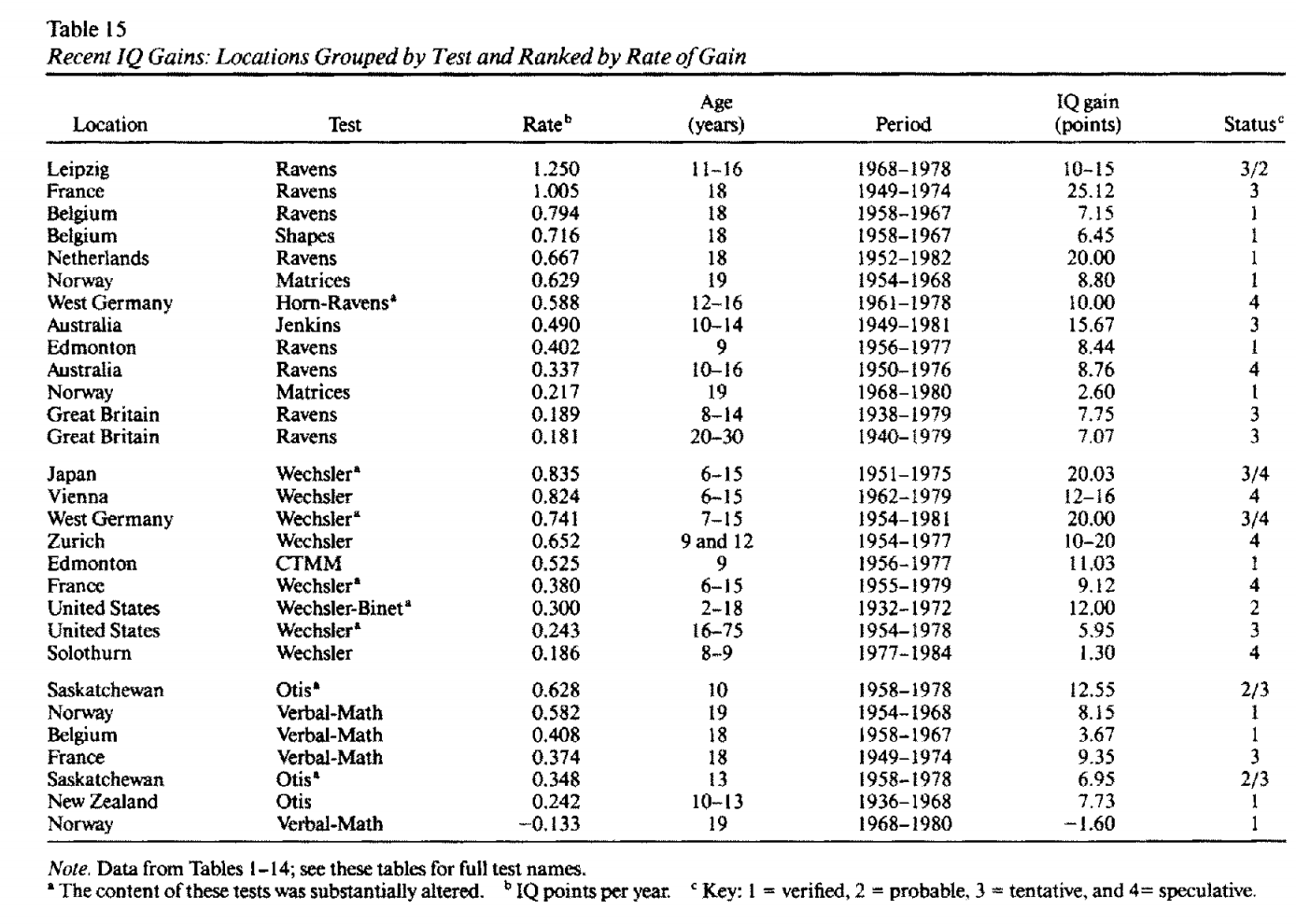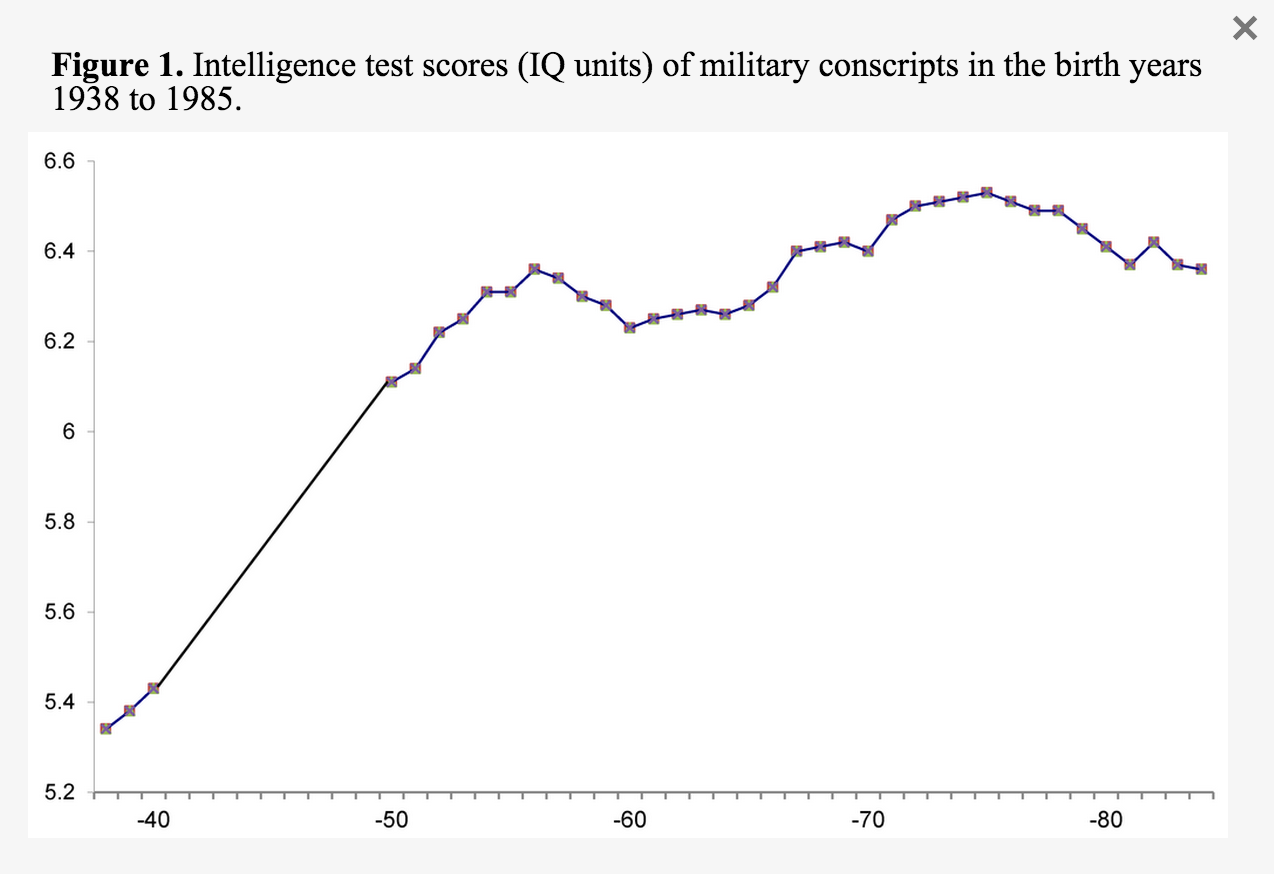This is part of a weekly reading group on Nick Bostrom's book, Superintelligence. For more information about the group, and an index of posts so far see the announcement post. For the schedule of future topics, see MIRI's reading guide.
Welcome. This week we finish chapter 2 with three more routes to superintelligence: enhancement of biological cognition, brain-computer interfaces, and well-organized networks of intelligent agents. This corresponds to the fourth section in the reading guide, Biological Cognition, BCIs, Organizations.
This post summarizes the section, and offers a few relevant notes, and ideas for further investigation. My own thoughts and questions for discussion are in the comments.
There is no need to proceed in order through this post, or to look at everything. Feel free to jump straight to the discussion. Where applicable and I remember, page numbers indicate the rough part of the chapter that is most related (not necessarily that the chapter is being cited for the specific claim).
Reading: “Biological Cognition” and the rest of Chapter 2 (p36-51)
Summary
Biological intelligence
- Modest gains to intelligence are available with current interventions such as nutrition.
- Genetic technologies might produce a population whose average is smarter than anyone who has have ever lived.
- Some particularly interesting possibilities are 'iterated embryo selection' where many rounds of selection take place in a single generation, and 'spell-checking' where the genetic mutations which are ubiquitous in current human genomes are removed.
Brain-computer interfaces
- It is sometimes suggested that machines interfacing closely with the human brain will greatly enhance human cognition. For instance implants that allow perfect recall and fast arithmetic. (p44-45)
- Brain-computer interfaces seem unlikely to produce superintelligence (p51) This is because they have substantial health risks, because our existing systems for getting information in and out of our brains are hard to compete with, and because our brains are probably bottlenecked in other ways anyway. (p45-6)
- 'Downloading' directly from one brain to another seems infeasible because each brain represents concepts idiosyncratically, without a standard format. (p46-7)
Networks and organizations
- A large connected system of people (or something else) might become superintelligent. (p48)
- Systems of connected people become more capable through technological and institutional innovations, such as enhanced communications channels, well-aligned incentives, elimination of bureaucratic failures, and mechanisms for aggregating information. The internet as a whole is a contender for a network of humans that might become superintelligent (p49)
Summary
- Since there are many possible paths to superintelligence, we can be more confident that we will get there eventually (p50)
- Whole brain emulation and biological enhancement are both likely to succeed after enough incremental progress in existing technologies. Networks and organizations are already improving gradually.
- The path to AI is less clear, and may be discontinuous. Which route we take might matter a lot, even if we end up with similar capabilities anyway. (p50)
The book so far
Here's a recap of what we have seen so far, now at the end of Chapter 2:
- Economic history suggests big changes are plausible.
- AI progress is ongoing.
- AI progress is hard to predict, but AI experts tend to expect human-level AI in mid-century.
- Several plausible paths lead to superintelligence: brain emulations, AI, human cognitive enhancement, brain-computer interfaces, and organizations.
- Most of these probably lead to machine superintelligence ultimately.
- That there are several paths suggests we are likely to get there.
Do you disagree with any of these points? Tell us about it in the comments.
Notes
- Nootropics
Snake Oil Supplements? is a nice illustration of scientific evidence for different supplements, here filtered for those with purported mental effects, many of which relate to intelligence. I don't know how accurate it is, or where to find a summary of apparent effect sizes rather than evidence, which I think would be more interesting.
Ryan Carey and I talked to Gwern Branwen - an independent researcher with an interest in nootropics - about prospects for substantial intelligence amplification. I was most surprised that Gwern would not be surprised if creatine gave normal people an extra 3 IQ points. - Environmental influences on intelligence
And some more health-specific ones. - The Flynn Effect
People have apparently been getting smarter by about 3 points per decade for much of the twentieth century, though this trend may be ending. Several explanations have been proposed. Namesake James Flynn has a TED talk on the phenomenon. It is strangely hard to find a good summary picture of these changes, but here's a table from Flynn's classic 1978 paper of measured increases at that point:
Here are changes in IQ test scores over time in a set of Polish teenagers, and a set of Norwegian military conscripts respectively:

- Prospects for genetic intelligence enhancement
This study uses 'Genome-wide Complex Trait Analysis' (GCTA) to estimate that about half of variation in fluid intelligence in adults is explained by common genetic variation (childhood intelligence may be less heritable). These studies use genetic data to predict 1% of variation in intelligence. This genome-wide association study (GWAS) allowed prediction of 2% of education and IQ. This study finds several common genetic variants associated with cognitive performance. Stephen Hsu very roughly estimates that you would need a million samples in order to characterize the relationship between intelligence and genetics. According to Robertson et al, even among students in the top 1% of quantitative ability, cognitive performance predicts differences in occupational outcomes later in life. The Social Science Genetics Association Consortium (SSGAC) lead research efforts on genetics of education and intelligence, and are also investigating the genetics of other 'social science traits' such as self-employment, happiness and fertility. Carl Shulman and Nick Bostrom provide some estimates for the feasibility and impact of genetic selection for intelligence, along with a discussion of reproductive technologies that might facilitate more extreme selection. Robert Sparrow writes about 'in vitro eugenics'. Stephen Hsu also had an interesting interview with Luke Muehlhauser about several of these topics, and summarizes research on genetics and intelligence in a Google Tech Talk. - Some brain computer interfaces in action
For Parkinson's disease relief, allowing locked in patients to communicate, handwriting, and controlling robot arms. - What changes have made human organizations 'smarter' in the past?
Big ones I can think of include innovations in using text (writing, printing, digital text editing), communicating better in other ways (faster, further, more reliably), increasing population size (population growth, or connection between disjoint populations), systems for trade (e.g. currency, finance, different kinds of marketplace), innovations in business organization, improvements in governance, and forces leading to reduced conflict.
In-depth investigations
If you are particularly interested in these topics, and want to do further research, these are a few plausible directions, some inspired by Luke Muehlhauser's list, which contains many suggestions related to parts of Superintelligence. These projects could be attempted at various levels of depth.
- How well does IQ predict relevant kinds of success? This is informative about what enhanced humans might achieve, in general and in terms of producing more enhancement. How much better is a person with IQ 150 at programming or doing genetics research than a person with IQ 120? How does IQ relate to philosophical ability, reflectiveness, or the ability to avoid catastrophic errors? (related project guide here).
- How promising are nootropics? Bostrom argues 'probably not very', but it seems worth checking more thoroughly. One related curiosity is that on casual inspection, there seem to be quite a few nootropics that appeared promising at some point and then haven't been studied much. This could be explained well by any of publication bias, whatever forces are usually blamed for relatively natural drugs receiving little attention, or the casualness of my casual inspection.
- How can we measure intelligence in non-human systems? e.g. What are good ways to track increasing 'intelligence' of social networks, quantitatively? We have the general sense that groups of humans are the level at which everything is a lot better than it was in 1000BC, but it would be nice to have an idea of how this is progressing over time. Is GDP a reasonable metric?
- What are the trends in those things that make groups of humans smarter? e.g. How will world capacity for information communication change over the coming decades? (Hilbert and Lopez's work is probably relevant)
How to proceed
This has been a collection of notes on the chapter. The most important part of the reading group though is discussion, which is in the comments section. I pose some questions for you there, and I invite you to add your own. Please remember that this group contains a variety of levels of expertise: if a line of discussion seems too basic or too incomprehensible, look around for one that suits you better!
Next week, we will talk about 'forms of superintelligence', in the sense of different dimensions in which general intelligence might be scaled up. To prepare, read Chapter 3, Forms of Superintelligence (p52-61). The discussion will go live at 6pm Pacific time next Monday 13 October. Sign up to be notified here.
Shulman & Bostrom (2014) make a nice point about this:
As table 2 in the paper shows, the American public generally opposed IVF until the first IVF baby was born, and then they were in favor of it.
As of 2004, only 28% of Americans approve of embryo selection for improving strength or intelligence, but that could change rapidly when the technology is available.
On the other hand, we could point to Down syndrome eugenics: while it's true that Down's has fallen a lot in America thanks to selective abortion, it's also true that Down's has not disappeared and the details make me pessimistic about any widespread use in America of embryo selection for relatively modest gains.
An interesting paper: "Decision Making Following a Prenatal Diagnosis of Down Syndrome: An Integrative Review", Choi et al 2012 (excerpts). To summarize:
- many people are, on principle, unwilling to abort based on a Down's diagnosis, and
... (read more)